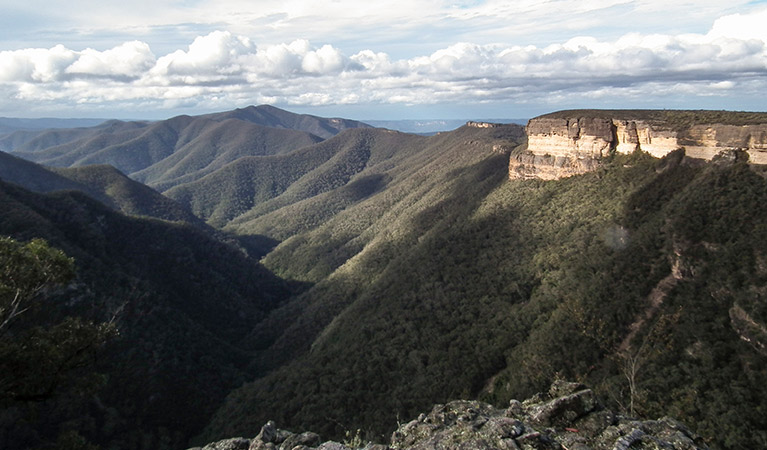Kanangra-Boyd National Park
Overview
Part of the Greater Blue Mountains Area World Heritage Property, Kanangra-Boyd National Park is just 180km from Sydney. Enjoy superb scenery, abundant wildlife, cycling and walking.
Read more about Kanangra-Boyd National Park
Just 180km from the outskirts of Sydney, Kanangra-Boyd National Park, part of the Greater Blue Mountains Area World Heritage Property, feels like you’ve crossed an ocean to get there. Take in the magnificent scenery – the sheer sandstone cliff faces of Kanangra Walls or mist-wreathed Mount Cloudmaker – before walking down forest-lined trails to one of the park’s waterfalls. Keep your eyes peeled for echidnas and lyrebirds, particularly during summer.
An easy day trip from the Blue Mountains, Kanangra-Boyd also has quiet campsites among the snow gums at Boyd River if you want to get away from it all. Cyclists will want to bring their mountain bikes to explore the park’s fire trails. For the fishing enthusiasts, trout can be caught along Kowmung River and, for the adventurous, canyoning is popular during the warmer months.
Local alerts
For the latest updates on fires, closures and other alerts in this area, see https://uat.nswparks.cloud/visit-a-park/parks/kanangraboyd-national-park/local-alerts
Contact
- in the Sydney and surrounds and Country NSW regions
Kanangra-Boyd is always open, but may have to close at times due to poor weather or fire danger.
-
-
Oberon office
02 6336 6200
Contact hours: Monday to Friday, 9am to 4.30pm. - 38 Ross Street, Oberon NSW 2787
-
Email: npws.kanangra@environment.nsw.gov.au
-
Oberon office
-
-
Blue Mountains Heritage Centre and Blackheath office
02 4787 8877
Contact hours: 9am to 4.30pm daily. Closed Christmas Day. - 270 Govetts Leap Road, Blackheath NSW 2785
-
Email: bluemountains.heritagecentre@environment.nsw.gov.au
-
Blue Mountains Heritage Centre and Blackheath office
Visitor info
All the practical information you need to know about Kanangra-Boyd National Park.
Map
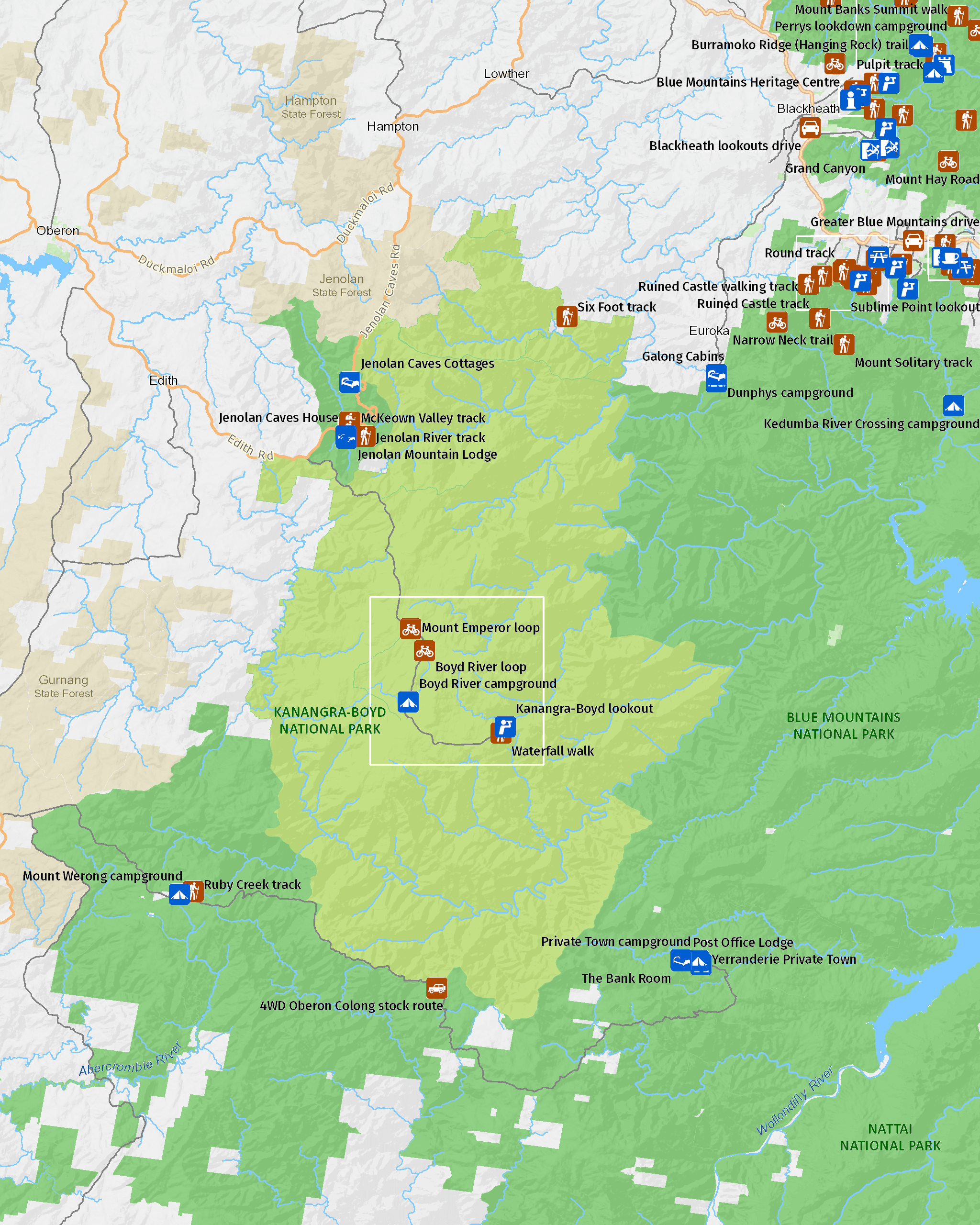
Map
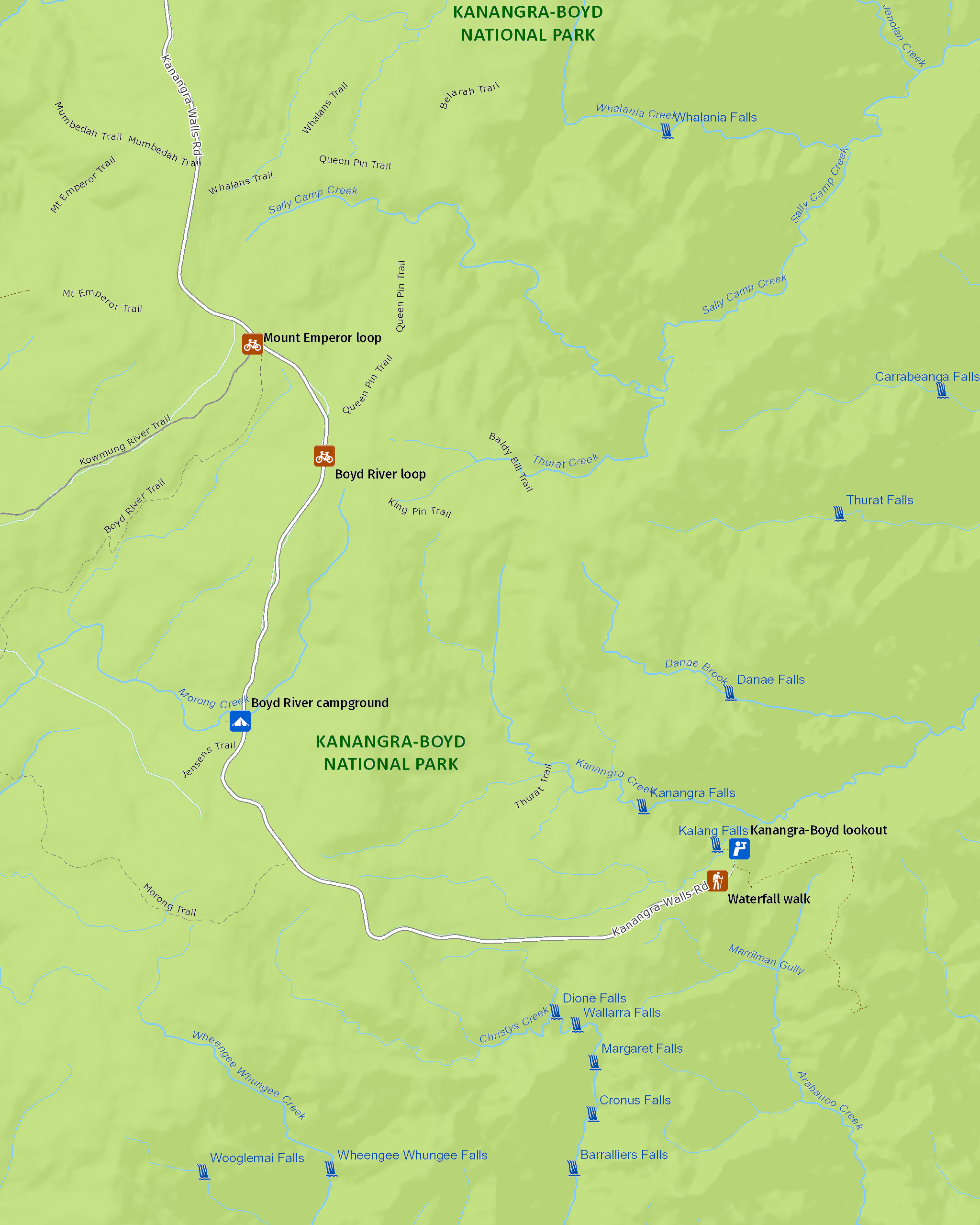
Map legend

Maps and downloads
Nearby towns
Jenolan Caves (6 km)
Scientists from the CSIRO (Commonwealth Science and Industrial Resource Organisation) estimate that the limestone at the Jenolan Caves dates back at least 340 million years.
Oberon (24 km)
If the famous Jenolan Caves are on your travel itinerary Oberon in the Blue Mountains is the perfect spot from which to plan your caving adventure. There are a number of ways visitors can tour the caves.
Katoomba (79 km)
Katoomba is at the heart of most of the stunning natural attractions that make up the Blue Mountains National Park. You can admire deep valleys, sandstone plateaus, waterfalls and native animals from the many walking trails and lookouts near Katoomba.
Learn more
Kanangra-Boyd National Park is a special place. Here are just some of the reasons why:
Wonderful wilderness

High plateaus and sheltered slopes mean Kanangra-Boyd has a diverse range of plantlife, some of it unique to the national park. Heath and mallee dominate the areas exposed to wind and weather, while tall snow gum forests can also be found in the park. Look for the yellow Kanangra wattle that grows only on the rivers - it flowers from early spring to late winter. The wildlife population is extensive too. Keep your eyes peeled for red-necked wallabies, which thrive in this area. Honeyeaters, wrens and fruit-eating pigeons are just some of the 195 species of birds that can be spotted in the park on a daily basis.
- Kanangra Waterfall walk Kanangra Waterfall walk in Kanangra-Boyd National Park offers marvellous views of the cascading water at Kanangra and Kalang Falls.
- Kanangra-Boyd lookout You can see for miles at Kanangra-Boyd lookout, an easily accessible viewpoint overlooking Kanangra Walls and Mount Cloudmaker.
Preserving nature for future generations
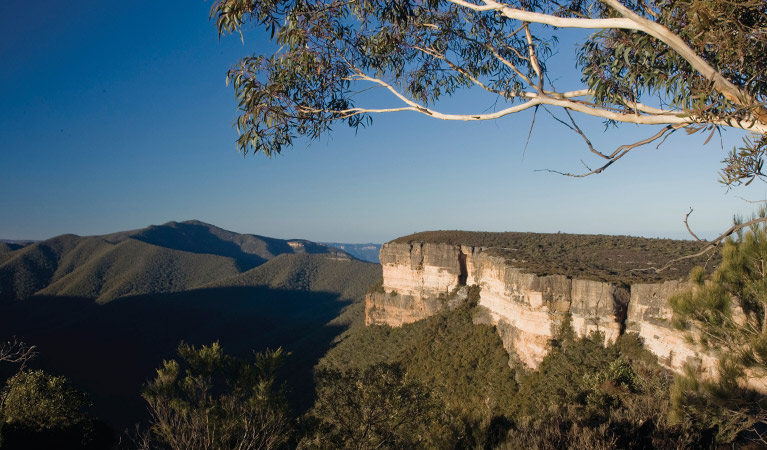
There was a time when Kanangra-Boyd was in danger from logging and the extraction of lime. That all changed after a five-year conservation effort resulted in it being declared part of Greater Blue Mountains Area World Heritage Property in 1972.
Amazing formations
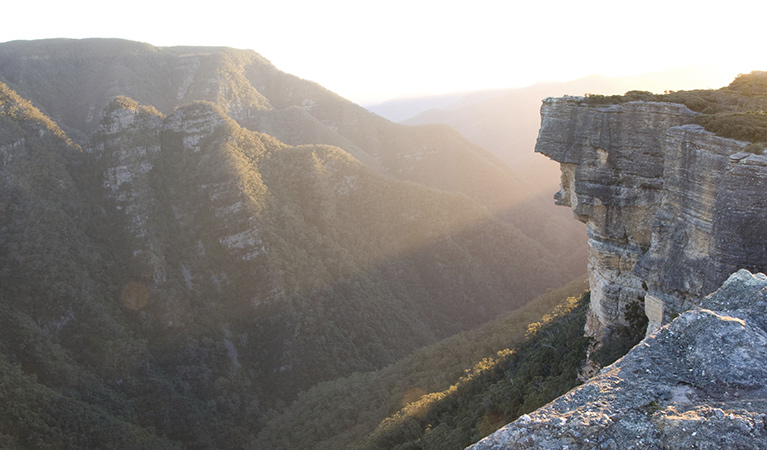
You can see many unique formations in Kanangra-Boyd National Park, including Thurat Spires, Kanangra Walls, Mount Colong, and waterfall systems - Kalang, Kanangara and Morong. The park also features a series of karst landforms that can be explored by those with caving experience.
- Kanangra Waterfall walk Kanangra Waterfall walk in Kanangra-Boyd National Park offers marvellous views of the cascading water at Kanangra and Kalang Falls.
- Kanangra-Boyd lookout You can see for miles at Kanangra-Boyd lookout, an easily accessible viewpoint overlooking Kanangra Walls and Mount Cloudmaker.
Action adventure
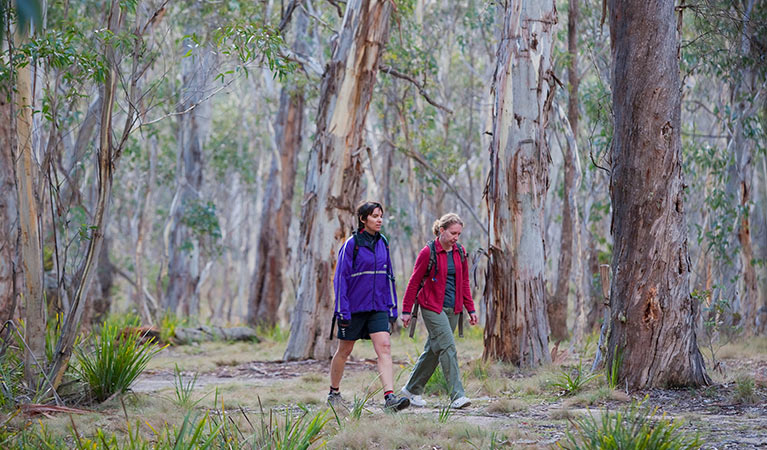
Hardcore hiker? Mad for mountain biking? There's something for whatever level of adventure you desire. Fire trails that wind throughout the park can be explored by 4WD or bicycle. For those who are handy with a map and compass, there's plenty of opportunity for self-reliant bushwalking. There are also marked trails that take in the captivating landscape which are even suitable for the kids. You might even want to throw in a line at Kowmung River to see if you can hook a trout.
- Boyd River loop Dean TEST 9 Dec 2024 - Sitecore upgrade 10.4. Take the easy route to peaceful cycling on Boyd River loop, a 21km journey that follows fire trails and roads in Kanangra-Boyd National Park.
- Kanangra-Boyd lookout You can see for miles at Kanangra-Boyd lookout, an easily accessible viewpoint overlooking Kanangra Walls and Mount Cloudmaker.
- Mount Emperor loop A scenic 12.5km ride across the Boyd Plateau, Mount Emperor loop gives mountain bike riders the opportunity to explore some of the lesser-known corners Kanangra-Boyd National Park.
- TTD Cycling trails search This is the short description. Take the easy route to peaceful cycling on Boyd River loop, a 21km journey that follows fire trails and roads in Kanangra-Boyd National Park.
Plants and animals protected in this park
Animals
-

Spotted-tailed quoll (Dasyurus maculatus)
The spotted-tailed quoll is the largest remaining carnivorous marsupial on the Australian mainland. It’s protected as a vulnerable species in NSW.
-

Short-beaked echidna (Tachyglossus aculeatus)
One of only 2 egg-laying mammals in the world, the short-beaked echidna is one of the most widespread of Australian native animals. Covered in spines, or quills, they’re equipped with a keen sense of smell and a tube-like snout which they use to break apart termite mounds in search of ants.
-

Superb lyrebird (Menura novaehollandiae)
With a complex mimicking call and an elaborate courtship dance to match, the superb lyrebird is one of the most spectacular Australian animals. A bird watching must-see, the superb lyrebird can be found in rainforests and wet woodlands across eastern NSW and Victoria.
Education resources (1)
What we're doing
Kanangra-Boyd National Park has management strategies in place to protect and conserve the values of this park. View the detailed park and fire management documents.

